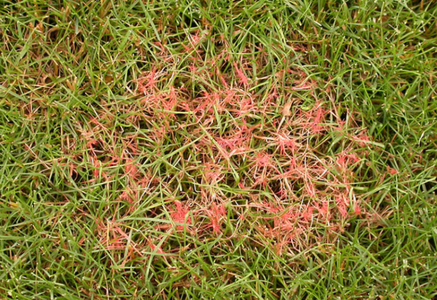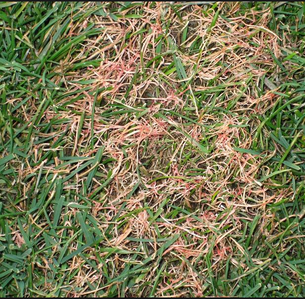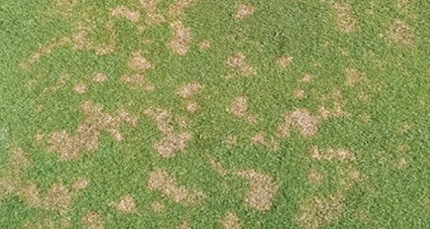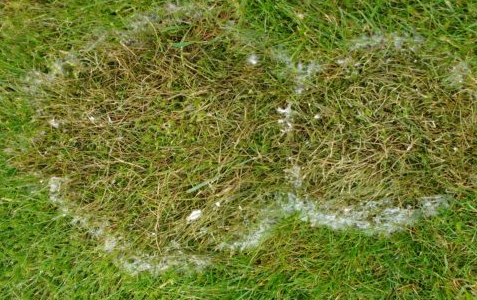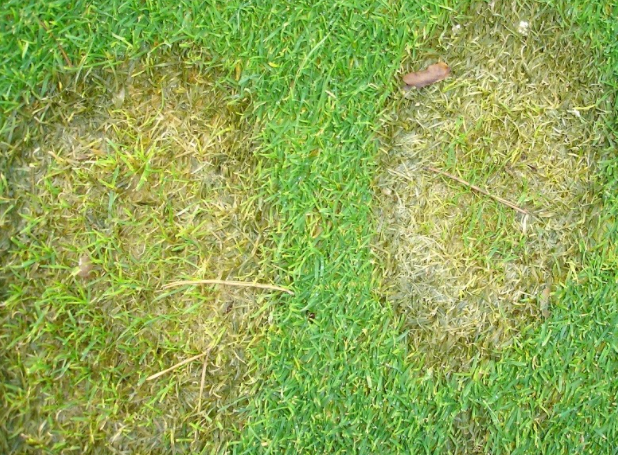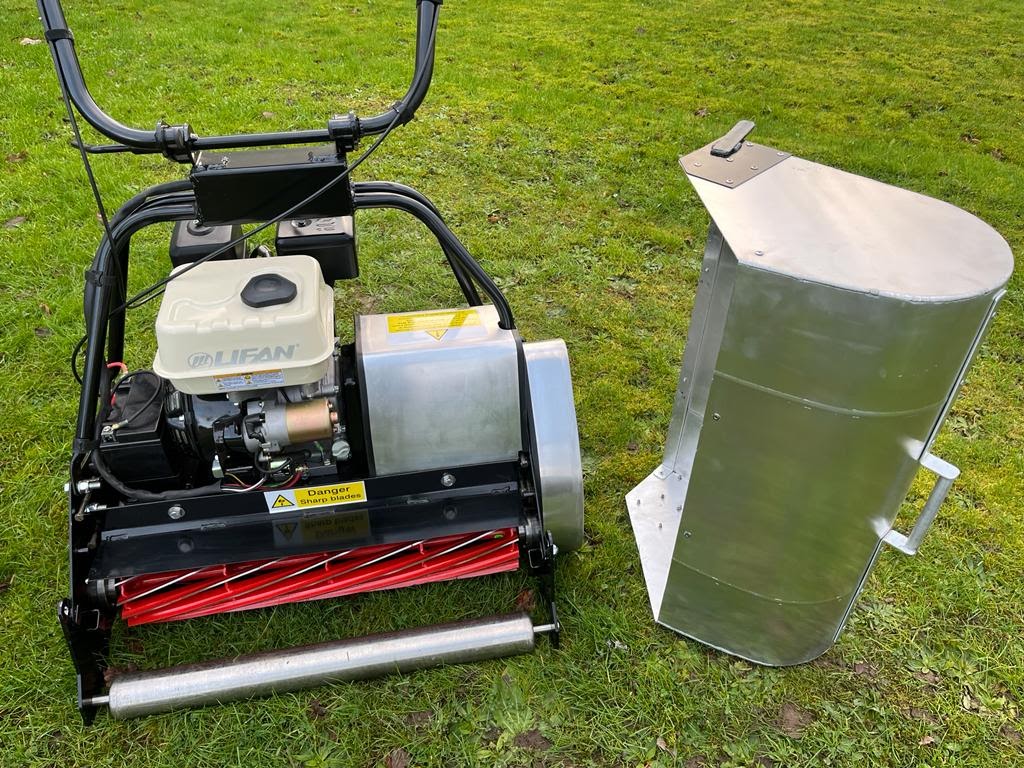Red Thread
Red Thread is a fungal attack and appears as pink patches of grass. If you look closely you will see the pink fungus on the leaf. The best way of checking this is to pluck some grass from the lawn and look at it close up. Fortunately, it doesn't kill the grass and the cure is simple, just treat with Soluble Iron in a strong dilution (2.5kg per 50 litres of water). Red Thread spores reside in the soil and wait for the right conditions to develop.

